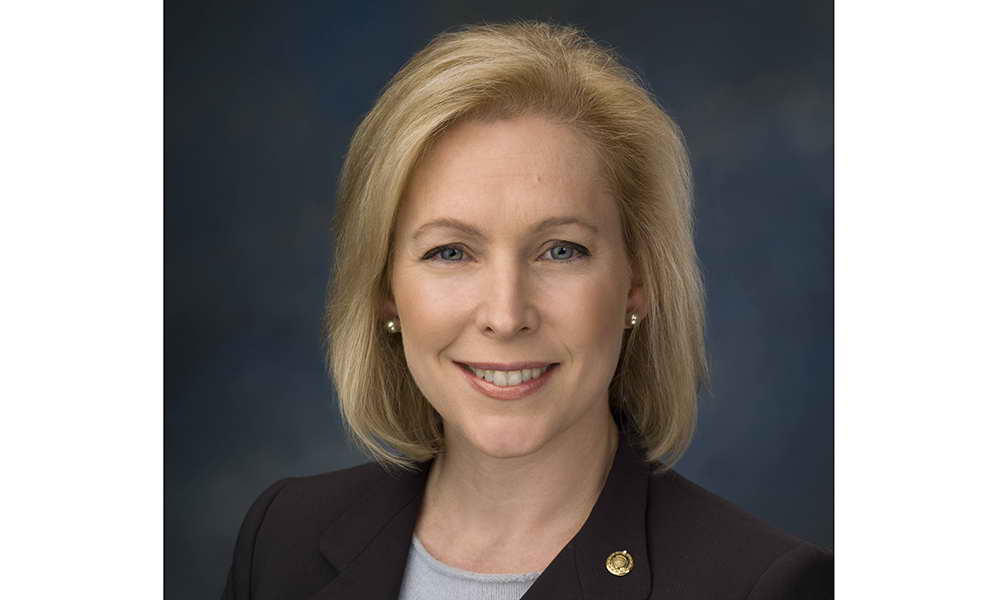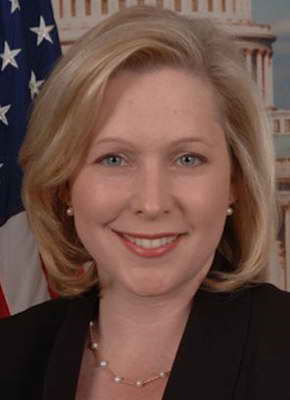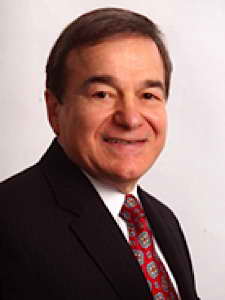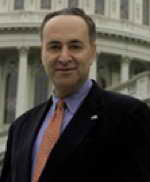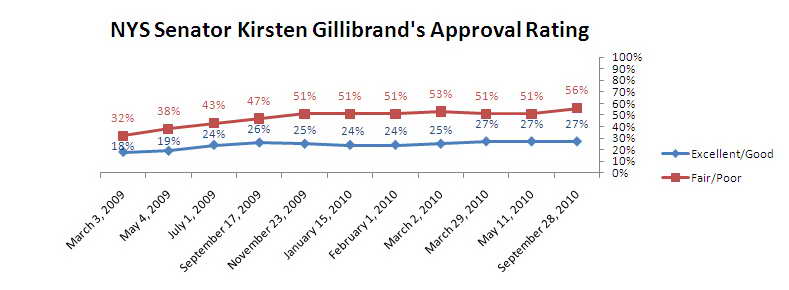September 28, 2010
9/28: Gillibrand Leads DioGuardi, 52% to 41%, Among Likely Voters
Both of New York’s seats in the U.S. Senate are up in this November’s midterm elections. In the race between Democratic U.S. Senator Kirsten Gillibrand and her Republican opponent, Joseph DioGuardi, Gillibrand holds an 11 percentage point lead among likely voters in New York State. A majority — 52% — reports they support Gillibrand while 41% say they back DioGuardi. 7% are unsure.
Click Here for Complete September 28, 2010 Poll Results and Tables
Not surprisingly, there is a partisan divide among likely voters. 85% of likely Democratic voters plan to support Gillibrand while 9% say they will back DioGuardi. 80% of likely Republican voters intend to cast their ballot for DioGuardi while 14% say they will vote for Gillibrand. A plurality of non-enrolled voters who are likely to cast their ballot on Election Day — 46% — throw their support behind Gillibrand while 41% back DioGuardi.
81% of likely voters who are supporters of the Tea Party favor candidate DioGuardi while 14% are pulling for Gillibrand. 5% are unsure.
”The seat is leaning Gillibrand’s way,” says Dr. Lee M. Miringoff, Director of The Marist College Institute for Public Opinion. “But, the contest remains competitive.”
Gillibrand is the clear leader among likely voters in New York City but not in other regions in the state. About two-thirds of likely New York City voters — 66% — support Gillibrand while 27% back DioGuardi. 7% are unsure. Voters in upstate New York and in the suburbs of New York City divide. Upstate, Gillibrand garners the support of 47% while DioGuardi nets 45% from likely upstate voters. 7% are unsure. And, in the suburbs, including Westchester County which is DioGuardi’s regional base of support, nearly half of likely voters — 49% — back DioGuardi while 45% support Gillibrand. 6% are unsure.
When likely voters including those who are undecided yet leaning toward a candidate are taken into consideration, 54% report they plan to cast their ballot for Gillibrand while 42% state they will vote for DioGuardi. 4% are unsure.
Among the overall statewide electorate, Gillibrand nets 55% of registered voters’ support compared with DioGuardi’s 36%. 9% are unsure.
Table: U.S. Senate in New York Tossup – Gillibrand/DioGuardi (Likely Voters)
Table: U.S. Senate in New York Tossup – Gillibrand/DioGuardi (Likely Voters with Leaners)
Table: U.S. Senate in New York Tossup – Gillibrand/DioGuardi (Registered Voters)
Strong Support for Gillibrand and DioGuardi
How strongly are likely voters supporting their choice of candidate? A slim majority — 51% — say they strongly support their pick while 35% somewhat support their candidate. 13%, however, might vote differently on Election Day. Just 1% are unsure.
“This could be an important factor in the contest. Nearly half of the probable electorate is still up for grabs,” says Dr. Lee M. Miringoff, Director of The Marist College Institute for Public Opinion. “They either somewhat support a candidate or might vote differently.”
A majority of likely voters who support DioGuardi — 54% — are firmly backing him. An additional 33% are somewhat behind him while 13% may change their mind. 1% are unsure.
Senator Gillibrand receives similar intensity of support. Half of likely voters who back her — 50% — report they are firmly in her camp. 36% are somewhat behind her while 14% might cast their ballot differently. Fewer than 1% are unsure.
Table: Candidates’ Strength of Support – Gillibrand/DioGuardi (Likely Voters)
Table: Candidates’ Strength of Support – Gillibrand/DioGuardi (Registered Voters)
Schumer with 21 Percentage Point Lead Over Townsend
U.S. Senator Chuck Schumer enjoys a comfortable lead over his challenger Jay Townsend in the race for U.S. Senate in New York. Among likely voters statewide, 58% say they will support Schumer while 37% report they will cast their ballot for Townsend. 5% are unsure.
While most Democrats who are likely to vote in November — 86% — back Schumer, he also receives the support of one-fourth — 25% — of likely Republican voters. Seven in ten Republicans — 70% — pull for Townsend while he takes one-tenth of the likely Democratic vote. Among likely voters who are not enrolled in any party, Schumer has a 7 percentage point lead. 49% report they will vote for Schumer while 42% state they will back Townsend.
Townsend, however, is the favorite among likely voters who support the Tea Party. Most in this group — 79% — choose Townsend for senator while 18% want Schumer to represent them. 3% are unsure.
Regardless of region, Schumer outpaces Townsend. Schumer has the best early showing in New York City. Here, almost three-quarters of likely voters — 74% — support Schumer while 23% back Townsend. 3% are unsure. Schumer also receives majority support in the city’s suburbs. 51% of likely voters in this region plan to cast their ballot for Schumer compared with 44% who toss their support behind Townsend. 5% are unsure. Half of likely upstate voters back Schumer while 43% want Townsend to win. 7% here are unsure.
Schumer maintains his lead when likely voters including those who are undecided yet leaning toward a candidate are included. Schumer receives the support of nearly six in ten — 59% — to Townsend’s 38%. 3% are unsure.
When looking at registered voters, Schumer’s lead grows to thirty-one percentage points. 63% are for Schumer while 32% back Townsend. 5% are unsure.
Table: U.S. Senate in New York Tossup – Schumer/Townsend (Likely Voters)
Table: U.S. Senate in New York Tossup – Schumer/Townsend (Likely Voters with Leaners)
Table: U.S. Senate in New York Tossup – Schumer/Townsend (Registered Voters)
Schumer Supporters More Intense in Support of Candidate
In the Schumer-Townsend race for U.S. Senate, 63% of likely voters strongly support their choice of candidate. 29% somewhat support their pick while 7% might vote differently. Just 1% are unsure.
Schumer backers are more committed to their candidate. Among likely voters who support the incumbent, 70% strongly support him while 24% somewhat back him. Just 6% might change their minds before Election Day, and fewer than 1% are unsure.
Townsend enjoys strong support from a majority of his supporters who are likely to vote — 52%. An additional 37% are somewhat confident they won’t second guess their decision while 10% might waver. 1% are unsure.
Table: Candidates’ Strength of Support – Schumer/Townsend (Likely Voters)
Table: Candidates’ Strength of Support – Schumer/Townsend (Registered Voters)
Nearly Four in Ten Very Enthusiastic About November Vote
38% of registered voters in New York State express they are very enthusiastic about voting in this November’s elections.
Republican voters are more enthusiastic than are Democrats and non-enrolled voters. A majority of Republicans — 51% — are highly enthusiastic while 34% of Democrats share the same level of enthusiasm. 31% of non-enrolled voters are very enthusiastic.
Schumer Approval Rating at 47%
47% of voters currently report Senator Schumer is doing either an excellent or good job in office. This includes 15% who think he is doing an excellent job and 32% who say he is doing a good one. 31% rate his performance as fair while 19% think he is doing poorly. Just 3% are unsure.
When Marist last asked voters about Senator Schumer’s approval rating in May, 50% of the electorate gave him above average marks. 31% thought his job performance was fair while 16% reported he fell short. 3%, at the time, were unsure.
Table: Schumer Approval Rating
Table: Schumer Approval Rating Over Time
No Bump in Gillibrand Approval Rating
There has been little change in Senator Kirsten Gillibrand’s approval rating. 27% of registered voters think Gillibrand is doing either an excellent or good job in office. Included here are 4% who say she is doing an excellent job and 23% who rate her performance as good. 38% grade her job as fair while 18% think she is performing poorly. 17% are unsure.
In Marist’s May survey, 27% gave her a thumbs-up while 37% thought she did an average job. 14%, at the time, believed her performance was poor, and 22% were unsure.
Table: Gillibrand Approval Rating
Table: Gillibrand Approval Rating Over Time

